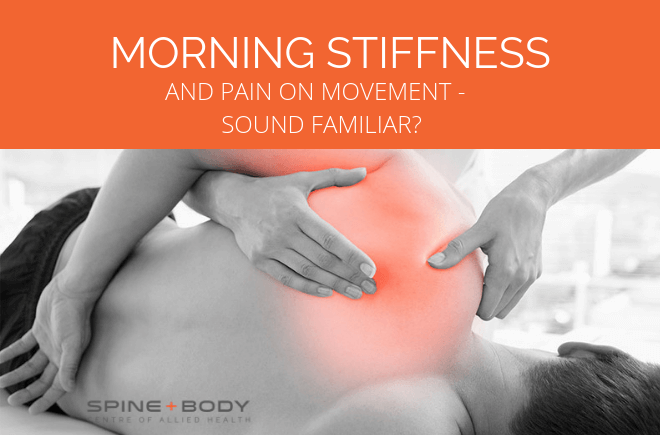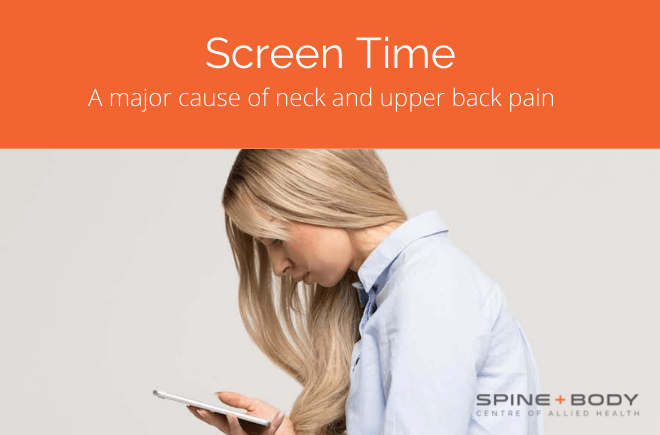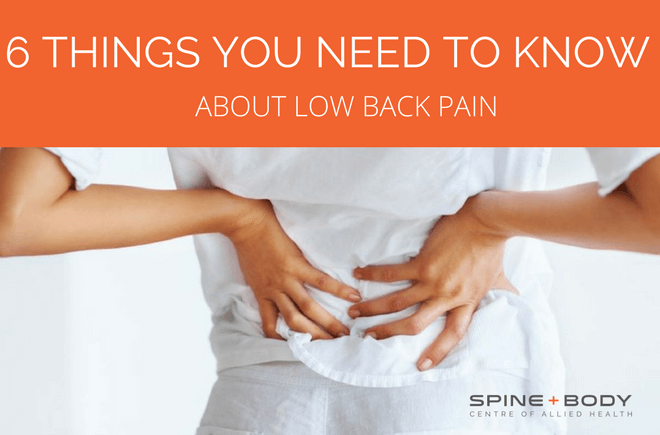Morning stiffness and pain on movement – sounds familiar?

Tendinopathy is the medical term that describes tendon pain leading to morning stiffness, difficulty [or an inability] to perform certain movements and localised tenderness on the affected tendon. It typically presents on three common sites – the Rotator Cuff of the shoulder, the Achilles tendon or the Patella tendon [just below the knee cap] with pain on movement that loads the tendon such as raising the arms above shoulder height, running jumping or negotiating stairs.
Typically, tendinopathy may commence gradually following repetitive loading or may emerge as a sudden onset set of symptoms following an isolated incident of excessive effort or load. Differential diagnosis may be necessary to exclude other issue such as neural or joint structures. Pain due to tendinopathy is characterised by stiffness in the morning or following a prolonged period of immobility which eases gradually after the commencement of movement but returns or may be provoked, often to a greater degree at the conclusion of exercise. In severe cases, there may be pain experienced during exercise or activity to such a degree that movement may be entirely hindered.
What causes tendinopathy?
Tendinopathy results from excessive or repetitive loading of a tendon. In the case of cumulative loading, there may be insufficient time allowed for microtrauma to the tendon to recover before it is loaded again. Acute [sudden onset] cases usually occur following an isolated episode of excessive loading such as lifting particularly heavy weights or undertaking an unfamiliar activity.
In cases of unilateral [one sided] tendinopathy where the activity undertaken has been shared between both sides of the body, there may often exist a very significant biomechanical anomaly that has exposed the affected tendon to excessive load. This is especially relevant in Achilles tendinopathy in runners that may be present of one side but not the other. The same exists for swimmers who experience symptoms on one shoulder but not the other.
In sports or activities where the activity is inherently asymmetrical such as tennis, symptoms may emerge due to increases in training time, a change in hitting technique or an alteration in equipment such as different string tension in the racquet which can be easily identified and corrected.
In cases such as a runner suffering unilateral Achilles or Patellar tendinopathy, changes in posterior thigh or calf flexibility, leg length discrepancy following growth spurts in adolescents, a lack of ankle flexibility following an ankle sprain or excessive internal rotation of the hip may be one of a myriad of reasons why symptoms may present only on one side.
As well as a thorough clinical assessment, it may be useful to perform a 2D video running analysis. This can be easily undertaken in the clinic with the client running on the treadmill. This is a more objective way to analyse biomechanical issues and other possible contributing factors for persistent tendon problem or other running related injuries.
Failing to identify the likely source of the problem will most likely lead to prolonged dysfunction and may significantly worsen symptoms to a degree that work or sport may not be feasible.
What is the most effective treatment?

There are numerous treatment options available to successfully manage and resolve tendinopathy. The selection and order of specific treatment interventions will depend on individual case symptoms and how long the symptoms have persisted.
A consistent research finding is that modified exercise forms an integral part of achieving a successful outcome.
In many cases, tendinopathy may be frustratingly slow to recover and may exhibit incremental gains over several weeks. An experienced therapist will:
1. Identify the biomechanical causes leading to excessive tendon loading.
2. Rectify functional imbalances by releasing tight structures and strengthen weak or dysfunctional areas and treat the symptoms causing pain allowing pain-free movement.
3. Structure a progressive loading programme once these imbalances have been corrected for symptom free return to work or sport.
Manual therapy, dynamic taping and progressive loading with modified exercise can yield impressive and rapid results.
To inject or not to inject?
In the pursuit of rapid results, cortisone injections have occasionally been used in the past. A precautionary approach needs to be taken when using cortisone as it can alter the structure of collagen which is what tendons consist of and can therefore pose a significant risk of rupture under load.
The message is: early treatment most definitely assists in obtaining rapid results and that treatment and guided rehabilitation from an experienced therapist is essential in returning to pain free function.





